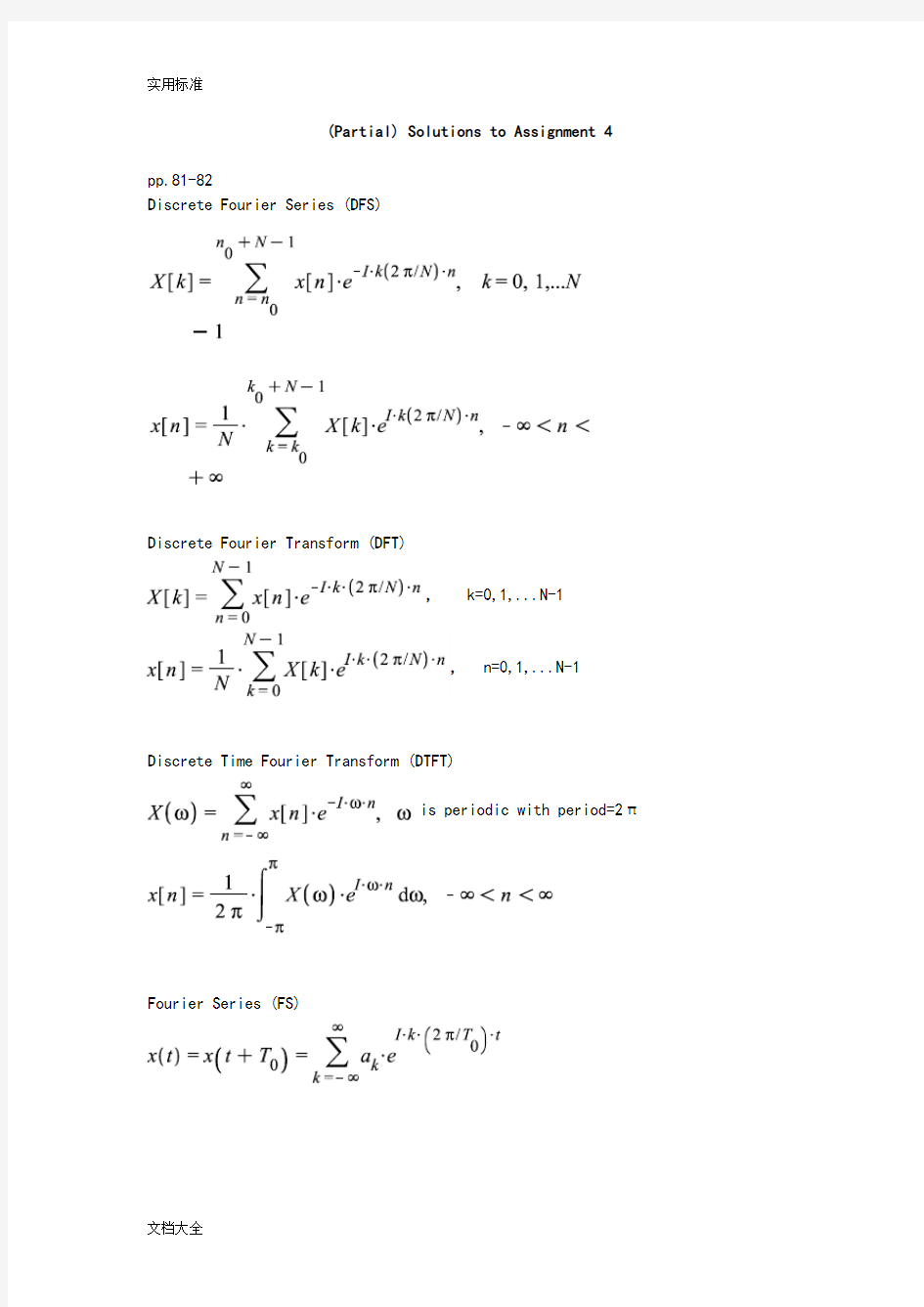数字信号处理(英文版)课后习题问题详解4

- 1、下载文档前请自行甄别文档内容的完整性,平台不提供额外的编辑、内容补充、找答案等附加服务。
- 2、"仅部分预览"的文档,不可在线预览部分如存在完整性等问题,可反馈申请退款(可完整预览的文档不适用该条件!)。
- 3、如文档侵犯您的权益,请联系客服反馈,我们会尽快为您处理(人工客服工作时间:9:00-18:30)。
(Partial) Solutions to Assignment 4
pp.81-82
Discrete Fourier Series (DFS)
Discrete Fourier Transform (DFT)
, k=0,1,...N-1
, n=0,1,...N-1
Discrete Time Fourier Transform (DTFT)
is periodic with period=2πFourier Series (FS)
Fourier Transform (FT)
----------------------------------------------------
2.1 Consider a sinusoidal signal Q2.1 Consider a sinusoidal signal
that is sampled at a frequency s F =2 kHz
a). Determine an expressoin for the sampled sequence , and
determine its discrete time Fourier transform
b) Determine
c) Re-compute ()X from ()X F and verify that you obtain the same expression as in (a)
a). ans:
=
where and
Using the formular:
b) ans:
where
c). ans:
Let be the sample function. The Fourier transform of is
Using the relationship or
where
Consider only the region where ( or
therefore
where
END
-----------------------------
2.3 For each shown, determine
where is the sampled sequence. The sampling frequence is given for each case.
(b) Hz
(d) Hz
theory: the relationship between DTFT and FT is
where
or
b. ans:
d. ans:
omitted (using the same method as above)
----------------------------------------------------
2.4 In the system shown, let the sequence be and the sampling frequency be kHz. Also let the lowpass filter be ideal, with bandwidth
(a). Determine an expression for Also sketch the frequency spectrum (magnitude only) within the frequency range
(b) Determine the output signal
(a) ans
From class notes, we have where is an ZOH interpolation function and We can write
Firstly, to find
where
It can be found as
Secondly, find This can be solved either by FT or DTFT.
We can write
where and
Using the formula:
we have
Using the formula,:
we have from DTFT of y[n]
Note the above expression is two pulses at and -the scaling factor is:
where
Therefore,
where
(b) ans:
After the ideal LPF, the Fourier transform of
Take inverse Fourier transform of , the output signal is:
Note both the and θ terms are introduced by ZOH function where is introduced because is non-ideal and θ represents the delay of
----------------------------------------------------
Q 2.5. We want to digitize and store a signal on a CD, and then reconstruct it at a later time. Let the signal
and let the sampling frequency Hz.
(a) Determine the continuous time signal after the reconstruction.
(a) ans: Assuming (ZOH+ ideal LPF) is used. This problem can be solved by using the results directly from Q2.4. In Q2.5 there are 3 sinusoidal signals instead of only one in Q2.4. Details of the solutions are omitted.
